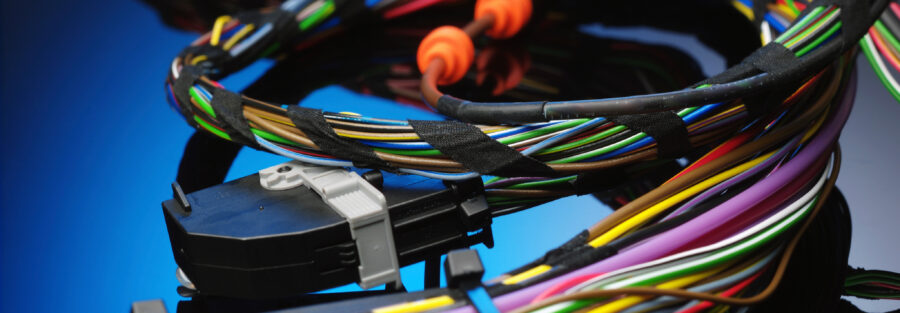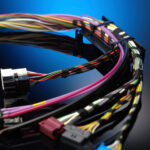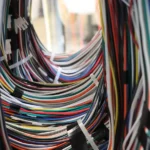Wire harnesses are groups of wires, cables, or other electrical components bound together to transmit electrical power or data. They are covered by exterior sheaths that are used to connect devices to their power source. When selecting a wire harness, it’s important to consider the capabilities of each component so that devices are powered safely.
The key components of wire harnesses include:
Connectors: Connectors are used to connect two or more wires or cables together and can have different configurations depending on the application. They are an essential component that make it easy to disconnect and reconnect the wire harness as needed. They are usually plastic but can be made from a variety of materials including metal or ceramic. Common types of connectors include pin connectors, plug connectors, and receptacle connectors.
Fuses: Electrical safety devices that help stop surges of power from overloading or damaging wire harnesses. They are typically small and cylindrical with a metal filament or wire that melts when the current exceeds a certain level.
Locks: Also called connector locks, locks are mechanical devices that secure a connector in place and prevent the connector from disconnecting. They consist of a locking mechanism that prevents the connector from disconnecting until it is released.
Outer coverings/Insulators: Also known as tubes and sleeves, insulators are protective materials used for environmental protection and protection from electric shock. They are also designed to provide protection against abrasion, vibration, and other environmental factors. Insulators can be made of various materials, such as nylon or polyolefin, and can be used to cover individual wires, a group of wires, or the entire wire harness.
Relays: An electrically operated switch used to turn higher amperage circuits on or off. It typically consists of an electromagnet and a set of contacts that can be opened or closed by energizing or de-energizing the electromagnet. Relays play an important role in controlling the current flow in wire harnesses and make it possible to isolate different electrical circuits.
Strain relief: A technique or device that plays a vital role in protecting a wire harness from damage caused by tension, bending, or other movement. Strain relief can also be used to provide a flexible connection preventing the wires from being stretched or twisted reducing wear and tear.
Terminals: Insulated or uninsulated metal devices attached to the end of the wire that provide a secure mechanical and electrical connection between the wire and the component, such as a circuit board or motor. They can be made of different materials, such as copper, brass, or steel and they come in various types. The most common being spade terminals, ring terminals, and fork terminals.
Ties: Keep the wires inside the harness bundled and organized. They can secure a group of wires or individual wires. Ties play a vital role in preventing the wire from tangling or being damaged by keeping it looking neat and clean.
Wire: Considered the base component of a wire harness, wires carry the current or signal that powers a device. They come in different gauges, or thicknesses, and can be designed for different voltages and signals. They are typically made of copper or other conductive metals.
If You Need Wire Harnesses, Contact Primo Corporations
Primo Corporations offers a number of comprehensive engineering services and large scale manufacturing of products, including the production of wire harnesses. To learn how we can apply our expertise to your next project, contact us.





